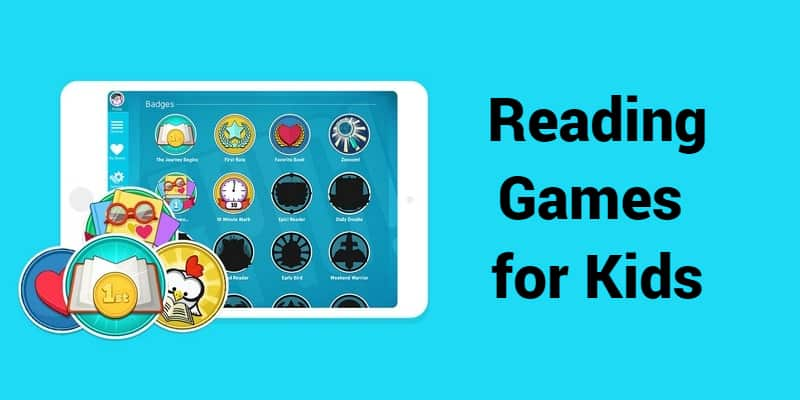
Math Slither is an online game that allows you to control a serpent. As you move about, you must eat whatever food is scattered in your path. Your snake will grow stronger and more powerful by doing this. As you grow larger, you can attack other snakes to earn points and bonus bonuses. To progress to the next level of the game, you must correctly use the controls.
Snake games
Math slither snake games are different from your typical snake games. This educational game uses your mouse to control the head of your snake and avoid collisions. In some games, you have to solve an equation in order to continue playing. To complete levels you must find the correct answer. If you fail you will lose your entire life.
Snake by Coolmath Games is one such game. The game is played by clicking the mouse or touching the screen. The goal is to collect the golden circles and stay away from the higher-numbered blocks.

Common Core-aligned math games
Common Core-aligned mathematics games can enhance students' understanding and skills. The games are simple to use and are appropriate for all grade levels. They can be used by teachers in classes or as motivational activities to encourage students to study mathematics. The games are free to download.
Many math games that align with the Common Core are available on the market. These games include games that teach students the structure and meanings of numbers as well as games that allow them to practice on a daily basis. Prodigy Math Game for example uses activities from the Common Core math curriculum to allow students to solve math problem every day. Students can also create exotic pets and complete challenges. They can also access teacher tools that allow them to assign and set homework.
Use the electrical grid to create a slithering-game
It's a fun way to make math interesting. You'll play this game as a snake and eat numbers, as you try to avoid collisions and reach the number on the top. The rules for this game are the same as those of traditional snake games. You must avoid collisions with other snakes and get enough energy to sustain yourself.
You'll need to make sure there are two lines connecting every point in a loop. This means that adjacent 1s should be on opposite sides. If you have two 1s on the same side of the grid, for example, you will need to draw an "X" on each one. If there are two 1s adjacent to one another, you will also need to X-out a line.

Your mouse can be used to control the snake's head
Your keyboard and mouse can be used to control your snake's head so that it moves in any direction. This can be done by using the arrow key. You can use the arrow key to move the snake's heads in any direction. If the frame rate drops, the game state will not sync properly. This can cause the snake to collapse or move in the PLAYING phase. This can be corrected by using the game's time functions.
FAQ
How much does homeschooling cost?
Homeschooling does not require you to pay a set fee. Some families charge between $0-$20 per lesson. Other families offer free services.
It takes effort and dedication to homeschooling. Parents should be able to dedicate enough time to their children.
They also need to have access book, supplies, books, and other learning resources. Many homeschoolers have to make use of community programs and events in order to enhance their curriculum.
Parents need to consider costs such as transportation, tutoring, and extracurricular activities.
Homeschoolers should also plan ahead for vacations, field trips, and special occasions.
To become an early-childhood educator, do you need to go to college?
Yes, but you may consider attending college to help prepare for a career.
It's important to note that becoming a teacher isn't easy. Every year, there are many applicants who aren’t accepted to programs. A lot of people leave college after just one semester.
You must still meet stringent qualifications to be a teacher.
What are the alternatives to school?
An alternative school aims to allow students with learning difficulties to access education and provide them with support from teachers who are qualified to meet their needs.
The aim of an alternative school is to provide children with special educational needs with the opportunity to learn within a normal classroom environment.
A lot of help is also available for them when they need it.
Alternative schools are not only for those who are excluded from mainstream schools.
They are available to all children, regardless of their ability or disability.
What is early child education?
Early Childhood Education is a field devoted to helping children develop into healthy, happy adults. This includes teaching children how to read and preparing them for kindergarten.
The goal of early childhood education is to help kids learn and grow by providing them with age-appropriate experiences.
Early childhood educators are often asked to assess the developmental needs for each child they see. This assessment is used to determine if a specific program would be beneficial for each child.
Parents can also interact with teachers and other professionals with experience with young children through early childhood programs.
As parents, they play a vital role in early childhood education. They must know how to properly care for their children and offer guidance and support when needed.
Parents can also participate in activities designed to teach their children skills they will need throughout their lives.
Although the term preschool education is often used to refer to early childhood education, it can also be used interchangeably for daycare centers. Prekindergarten education begins at three years of age, but early childhood education can begin around three.
What do you need to become a teacher in early childhood?
It is important to decide whether you want to enter early childhood education. You will need to earn your bachelor's degree if you decide to pursue a career in early childhood education. Some states require students hold a master's degree.
You will likely also have to attend classes in the summer months. These courses can be taken to learn about topics such as pedagogy and curriculum design.
Many colleges offer associate degrees which lead to teaching certificates.
Some schools offer certificates, while others offer bachelor's and master's degrees. However, some schools only offer diplomas.
Additional training may not be necessary if you intend to teach at home.
Homeschooling is possible for anyone.
Anyone can homeschool. There aren't any requirements.
High school graduates can still teach their children. Many families decide to teach their grandchildren while they are still in high school.
Parents who have received less formal education can still teach their children.
After satisfying certain requirements, parents can become certified teachers. These requirements vary by state.
Some states require homeschooled students take a test to graduate. Others do not.
Parents who wish to homeschool must register their family with the local school district.
This involves filling in paperwork and submitting it the school board.
Parents are permitted to enroll their children in private or public schools after they have registered.
A few states allow homeschooling without the need to register their children with government agencies.
If you are a resident of one of these countries, you will have to ensure your children adhere to the state's compulsory attendance requirements.
Statistics
- They are also 25% more likely to graduate from high school and have higher math and reading scores, with fewer behavioral problems,” according to research at the University of Tennessee. (habitatbroward.org)
- Globally, in 2008, around 89% of children aged six to twelve were enrolled in primary education, and this proportion was rising. (en.wikipedia.org)
- “Children of homeowners are 116% more likely to graduate from college than children of renters of the same age, race, and income. (habitatbroward.org)
- Think of the rhetorical power of nineteenth-century abolitionist Harriet Beecher Stowe, Martin Luther King, Jr., or Occupy Wall Street activists with their rallying cry of “we are the 99 percent.” (bostonreview.net)
- Among STEM majors, that number is 83.5 percent. (bostonreview.net)
External Links
How To
Why homeschool?
There are many things to take into consideration when making the decision to homeschool your child or send him to school.
-
What kind of education do your children need? Are you looking to develop social skills or academic excellence?
-
What level of involvement do you desire to have in your child's education and learning? Is it better to be kept up-to-date about your child's activities? Or would you rather let him/her make decisions on his/her own?
-
Are there special needs that your child has? What can you do to help your child with special needs?
-
Will you be able to manage your child's schedule? Are you able to commit to teaching your child at-home every day?
-
What subjects will you be covering? Math, science, language arts, art, music, history, geography, etc. ?
-
How much money do you have available to educate your child?
-
Is your child old enough for school?
-
You will need to find somewhere to place your child. You need to locate a suitable space that is large enough for a classroom as well as adequate facilities, such as bathrooms or kitchens.
-
What's your child's average age?
-
When does your child go back to sleep?
-
When does he/she wake up?
-
How long does the journey take from point A, to point B?
-
Is your child's school located far from you?
-
What is the distance between your home and your child's school?
-
How will your child get to and from school?
-
What are the benefits of homeschooling?
-
What are the drawbacks?
-
Who will supervise your child outdoors?
-
What are your expectations?
-
Which discipline will you choose?
-
What curriculum are you going to use?
There are many reasons people choose to homeschool their kids. Some of them include:
-
Your child might have learning disabilities that make it difficult for him/her to attend traditional schools.
-
You want to provide an alternative form of education for your child.
-
You desire more flexibility in scheduling.
-
High tuition fees are not something you want to pay.
-
Your child receives a better education than what he/she would get in a traditional school setting.
-
You believe that you can teach your child more than the teacher at a traditional school.
-
You don't love the way the school system operates.
-
The rules and regulations of school are confusing to you.
-
Your child should have a strong work ethic.
-
You want your child to have the freedom of choosing which courses they take.
-
You want individualized attention for your child.
Homeschooling also offers many other benefits, such as:
-
There are no worries about uniforms or books, pencils, papers, or other supplies.
-
You have the option to customize your child’s education according their interests.
-
Homeschooling allows parents to spend time with their children.
-
Homeschooled students tend to learn faster because they are not distracted by peers.
-
Homeschoolers score higher on standardized exams.
-
Homeschooling families are generally happier.
-
Homeschool students are less likely to drop out of school.